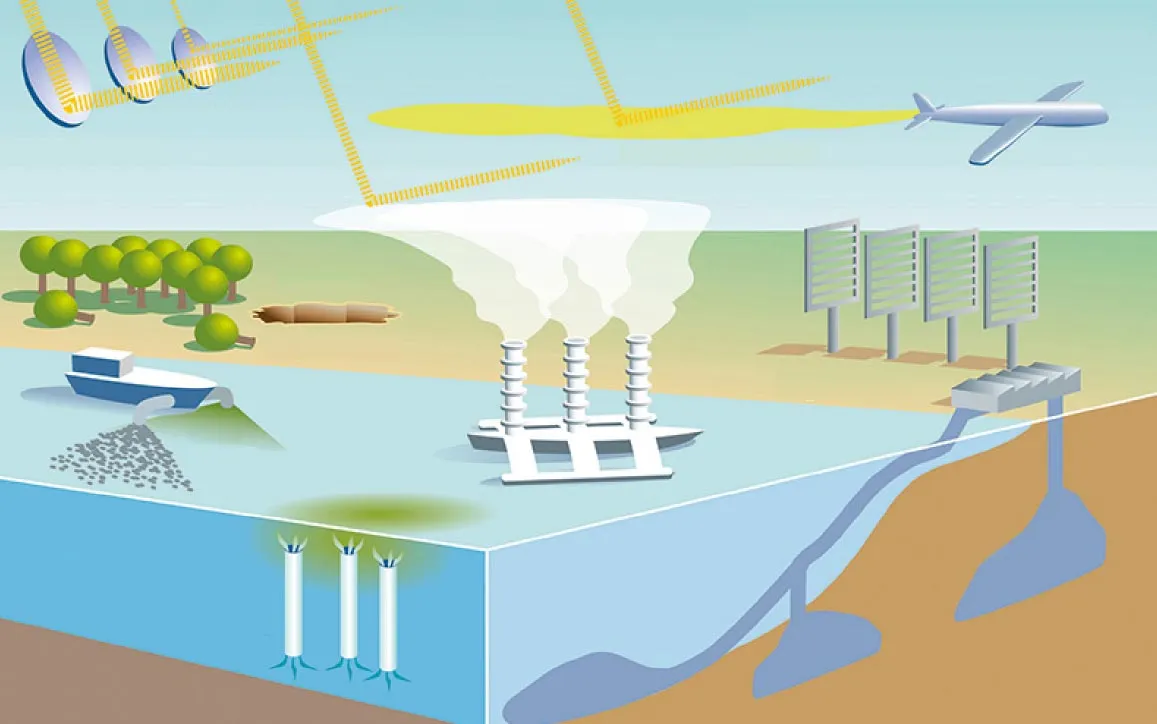Climate Engineering Could Save Us: Exploring Climate Change Mitigation, Geoengineering, and Global Warming Solutions
In an era marked by the growing impacts of climate change, the search for effective solutions has never been more critical. While reducing greenhouse gas emissions remains a top priority, some scientists and experts are exploring an audacious approach to combat global warming: climate engineering, also known as geoengineering. In this extensive exploration, we will delve into the world of climate change mitigation, examine the concept of geoengineering, and consider the potential role of these interventions in addressing the urgent challenge of global warming.
A Planet in Peril
The Climate Crisis Unfolds
The consequences of climate change are no longer distant threats; they are unfolding before our eyes. Rising global temperatures, extreme weather events, melting ice caps, and sea-level rise are all signs of a planet in peril. The urgency of addressing climate change cannot be overstated.
The Role of Greenhouse Gases
At the heart of the climate crisis are greenhouse gases, primarily carbon dioxide (CO2) and methane (CH4). These gases trap heat in the Earth’s atmosphere, leading to a gradual increase in global temperatures—an effect known as the greenhouse effect.
Climate Change Mitigation: Reducing Emissions
The Path to Mitigation
Climate change mitigation focuses on reducing the emissions of greenhouse gases into the atmosphere. It involves a multifaceted approach, encompassing changes in energy production, transportation, land use, and industrial processes. The goal is to limit global warming and its associated impacts.
Renewable Energy Transition
A fundamental aspect of mitigation is the transition to renewable energy sources such as solar, wind, and hydropower. By replacing fossil fuels with clean energy alternatives, we can significantly reduce CO2 emissions.
Efficiency and Conservation
Enhancing energy efficiency and promoting conservation efforts are vital components of mitigation. These measures help reduce energy consumption and lower emissions, both at the individual and industrial levels.
The Challenge of Carbon Removal
The Carbon Dilemma
Mitigation efforts alone may not be sufficient to combat the climate crisis. The world has already accumulated a significant amount of CO2 in the atmosphere, and removing it presents a formidable challenge. Addressing this carbon dilemma is crucial for achieving long-term climate stability.
Carbon Capture and Storage (CCS)
Carbon capture and storage technologies aim to capture CO2 emissions from industrial processes and power plants and then store them underground. While promising, CCS is not yet deployed at the scale required to make a substantial impact.
Natural Carbon Sinks
Forests, oceans, and other natural ecosystems act as carbon sinks, absorbing CO2 from the atmosphere. Protecting and restoring these ecosystems is essential for enhancing carbon removal.
Geoengineering: A Bold Intervention
Geoengineering Defined
Geoengineering, also known as climate engineering, refers to deliberate, large-scale interventions in the Earth’s climate system to mitigate the effects of global warming. It is a controversial and audacious approach to addressing climate change.
Solar Radiation Management (SRM)
One proposed geoengineering technique is SRM, which aims to reflect a portion of incoming solar radiation back into space. This could be achieved by deploying reflective materials in the stratosphere or by brightening marine clouds.
Carbon Dioxide Removal (CDR)
CDR techniques focus on removing CO2 from the atmosphere and storing it. These methods include afforestation, reforestation, direct air capture, and enhanced weathering of minerals.
The Controversy Surrounding Geoengineering
Ethical and Environmental Concerns
Geoengineering is fraught with ethical and environmental concerns. Intervening in the Earth’s climate system on a global scale could have unintended consequences, such as disrupting ecosystems, altering weather patterns, and creating geopolitical conflicts.
Moral Hazard
One of the central criticisms of geoengineering is the potential for moral hazard. If societies believe that geoengineering can provide a quick fix for climate change, they may be less motivated to reduce emissions through mitigation efforts.
Governance and Regulation
The absence of international governance and regulation for geoengineering poses significant challenges. Decisions about deploying these technologies could affect the entire planet, necessitating global cooperation and accountability.
Geoengineering: A Last Resort?
The Debate Continues
While the controversy surrounding geoengineering persists, proponents argue that it should not be dismissed outright. They view geoengineering as a potential last resort—a tool to address the most catastrophic consequences of climate change if mitigation and carbon removal efforts fall short.
Small-Scale Testing and Research
Advocates of geoengineering stress the importance of continued research and small-scale testing to better understand the potential benefits and risks of these technologies. They argue that responsible development and testing are essential steps toward informed decision-making.
A Comprehensive Approach
Ultimately, the debate over geoengineering underscores the complexity and urgency of the climate crisis. It raises questions about the limits of human intervention in the Earth’s systems and highlights the need for a comprehensive approach to climate change that includes both mitigation and carbon removal efforts.
A Holistic Climate Strategy
Mitigation, Carbon Removal, and Geoengineering
The most effective approach to addressing climate change may well be a combination of mitigation, carbon removal, and, potentially, limited and well-regulated geoengineering. Each element plays a role in the broader strategy to combat global warming.
International Cooperation
Addressing the climate crisis requires international cooperation and commitment. Agreements such as the Paris Agreement are crucial steps toward global climate action, providing a framework for nations to work together to reduce emissions and limit warming.
Individual and Collective Action
Individuals, communities, businesses, and governments all have a role to play in the fight against climate change. Small actions, like reducing personal carbon footprints and supporting renewable energy initiatives, can collectively contribute to significant change.
Conclusion: Navigating the Climate Challenge
The urgency of addressing climate change demands a multifaceted and innovative approach. While mitigation and carbon removal remain essential pillars of climate action, geoengineering, despite its controversy, should not be dismissed entirely. The complex and interconnected nature of the climate crisis requires a holistic strategy that draws on the best available science and technology.
As we navigate the path forward, the collective commitment to preserving our planet for future generations remains our most powerful tool. Whether through individual choices, international agreements, or innovative solutions, we have the capacity to meet the challenge of climate change and forge a sustainable future.
Hope you loved our blog on Climate Engineering Could Save Us: Exploring Climate Change Mitigation, Geoengineering, and Global Warming Solutions
Do Follow Us On Twitter – https://twitter.com/Uniqverses708
We Have a Wide Range of Unique information For You On uniqverses.com
Please like, comment & Share if you want us to keep bringing these amazing and unique information for you.









